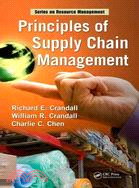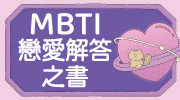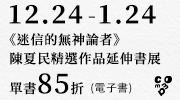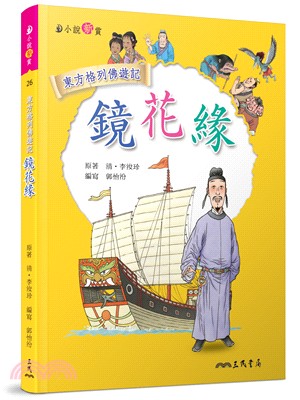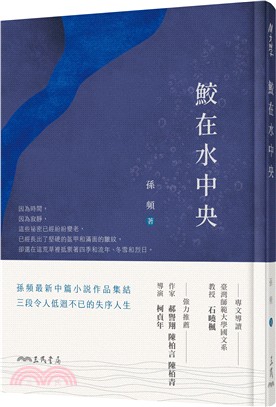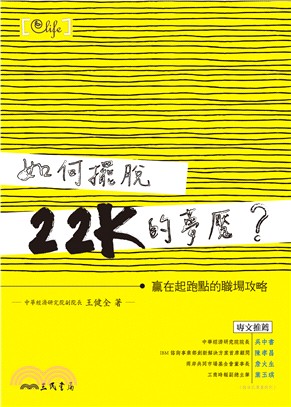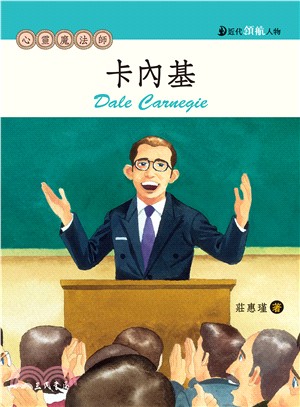Principles of Supply Chain Management
商品資訊
ISBN13:9781420091076
出版社:CRC PRESS
作者:Richard E. Crandall; William R. Crandall; Charlie C. Chen
出版日:2009/12/15
裝訂/頁數:精裝/645頁
定價
:NT$ 6042 元優惠價
:90 折 5438 元
若需訂購本書,請電洽客服 02-25006600[分機130、131]。
商品簡介
作者簡介
目次
相關商品
商品簡介
Going beyond the usual supply chain text, Principles of Supply Chain Management not only details the individual components of the supply chain but also illustrates how the pieces must come together. Providing the logic behind why supply chain management is essential, the text examines how supply chains are evolving, looks ahead to future developments, and also provides a balanced look at supply chains with a focus on where it needs to be—the customer. It also:
* Describes the forward supply chain (from the supplier to the customer) and the reverse supply chain (recycling)
* Reviews contemporary sustainability concepts including triple bottom line, cradle-to-grave, and cradle-to-cradle
* Includes extensive discussions on retailing, distribution, and manufacturing topics
* Details supply chain flows of physical goods, information, and funds
* Highlights the need for coordinated change in technology, infrastructure, and cultures among supply chain members
From the point of distribution all the way back to the point of origin, the text provides examples and case histories that illustrates a proven approach for achieving effective supply chain integration. This self-contained resource provides readers with a realistic appraisal of the state of the art in supply chain management and the understanding needed to build and manage effective supply chains in a wide-range of industries. Most importantly, it emphasizes the need for building and maintaining cooperation and collaboration among all members of the supply chain.
* Describes the forward supply chain (from the supplier to the customer) and the reverse supply chain (recycling)
* Reviews contemporary sustainability concepts including triple bottom line, cradle-to-grave, and cradle-to-cradle
* Includes extensive discussions on retailing, distribution, and manufacturing topics
* Details supply chain flows of physical goods, information, and funds
* Highlights the need for coordinated change in technology, infrastructure, and cultures among supply chain members
From the point of distribution all the way back to the point of origin, the text provides examples and case histories that illustrates a proven approach for achieving effective supply chain integration. This self-contained resource provides readers with a realistic appraisal of the state of the art in supply chain management and the understanding needed to build and manage effective supply chains in a wide-range of industries. Most importantly, it emphasizes the need for building and maintaining cooperation and collaboration among all members of the supply chain.
作者簡介
Richard E. "Dick" Crandall is a professor in the College of Business at Appalachian State University (ASU), Boone, North Carolina. He is a certified fellow in production and inventory management (CFPIM) and is also a certified supply chain professional (CSCP) by APICS—The Association for Operations Management. He received his PhD in production/operations management from the University of South Carolina, Columbia and is a registered professional engineer and a certified public accountant. Prior to joining ASU, Dick worked as an industrial engineer and in management positions for manufacturing and service companies. He was a consultant with a major consulting firm, installing systems for both operations and financial applications. With Rick Crandall, he coauthored the book New Methods of Competing in the Global Marketplace: Critical Success Factors from Service and Manufacturing, published in 2008 by CRC Press, Taylor & Francis.
William "Rick" Crandall currently serves as a professor of management at the University of North Carolina at Pembroke. He received his PhD in business administration with a focus on organizational behavior and human resource management from the University of Memphis, Tennessee. His primary research interest is in the area of crisis management, helping organizations cope with catastrophic events. He is the author of the new book, Crisis Management in the New Strategy Landscape (coauthored with John Parnell and John Spillan, also of the University of North Carolina at Pembroke), released by Sage Publications. He is also active in researching issues related to supply chain management. Prior to entering higher education, Dr. Crandall worked in management for ARA Services (now ARAMARK), a service management firm based in Philadelphia.
Charlie C. Chen was educated at Claremont Graduate University, California and received his PhD in management information systems. He is an associate professor in the Department of Computer Information Systems at Appalachian State University, Boone, North Carolina. His research interests include project management and supply chain management. He is a member of the Association for Information Systems and Decision Sciences Institute, and is certifi ed by the Project Management Institute as a project management professional (PMP). Dr. Chen has published in journals such as Communications of Association for Information Systems, Behaviour and Information Technology, Journal of Knowledge Management Research, Practice, and the Journal of Information Systems Education. Dr. Chen is a dedicated transnational scholar and is a trip leader for study-abroad programs in Asia.
William "Rick" Crandall currently serves as a professor of management at the University of North Carolina at Pembroke. He received his PhD in business administration with a focus on organizational behavior and human resource management from the University of Memphis, Tennessee. His primary research interest is in the area of crisis management, helping organizations cope with catastrophic events. He is the author of the new book, Crisis Management in the New Strategy Landscape (coauthored with John Parnell and John Spillan, also of the University of North Carolina at Pembroke), released by Sage Publications. He is also active in researching issues related to supply chain management. Prior to entering higher education, Dr. Crandall worked in management for ARA Services (now ARAMARK), a service management firm based in Philadelphia.
Charlie C. Chen was educated at Claremont Graduate University, California and received his PhD in management information systems. He is an associate professor in the Department of Computer Information Systems at Appalachian State University, Boone, North Carolina. His research interests include project management and supply chain management. He is a member of the Association for Information Systems and Decision Sciences Institute, and is certifi ed by the Project Management Institute as a project management professional (PMP). Dr. Chen has published in journals such as Communications of Association for Information Systems, Behaviour and Information Technology, Journal of Knowledge Management Research, Practice, and the Journal of Information Systems Education. Dr. Chen is a dedicated transnational scholar and is a trip leader for study-abroad programs in Asia.
目次
OVERVIEW OF SUPPLY CHAIN MANAGEMENT
Evolution of Supply Chains
Learning Outcomes
What Is a Supply Chain?
Importance of SCM
Evolution of Supply Chains
Changing Government Orientation
Current Trends That Link Supply Chain Participants More Closely
Current Developments in SCM
Obstacles to Supply Chain Integration
Examples of Companies with Successful Supply Chains
Progress toward an Integrated Supply Chain
Supply Chain Models
Supply Chains as a System
Learning Outcomes
Introduction
Supply Chain Systems
Types of Supply Chains
Examples of Supply Chains in Different Industries
Open Systems vs. Closed Systems
Effect of External Influences on Supply Chains
Obstacles and Enablers of Supply Chain Integration
Internal and External Customers
Open Systems vs. Closed Systems
Effect of External Influences on Supply Chains
Obstacles and Enablers of Supply Chain Integration
Performance Measurement
Allocation of Costs, Resources, and Benefits along the
Supply Chain
Value Creation as the Ultimate Objective
THE CUSTOMER PERSPECTIVE
Determining Customer Needs
Learning Outcomes
Introduction
Group Customers into Homogeneous Segments
Determine the Needs of the Ultimate Consumer
How Do You Accurately Determine Needs?
How Do You Forecast Demand?
Attributes of a Well-Designed Product
Product Design Approaches
Determine the Number of Supply Chains Needed within a Company
Performance Measurement
Determine the Needs of Internal Customers
A System to Meet Customer Needs
Learning Outcomes
What Is Customer Relationship Management?
Global Supply Chain Forum Model
How CRM Can Be Used to Design a Supply Chain?
Product Lifecycle Management
Supply Chain Mapping
Determining Resource Requirements
Designing Processes to Match with Products
Determining the Mix of "Make" and "Buy"
Aligning Entities along the Supply Chain
Evaluating the System Design
Demand Management
Learning Outcomes
Introduction
Definition of Demand Management
Importance of Demand Management
Managing Demand
Managing Supply
Merging Supply and Demand into a Demand Management Process
Demand Management in Manufacturing
Demand Management in Services
Proposed Demand Management Strategies
Factors That Affect the Selection of a Demand Management Strategy
Relationship between Factors and Strategies
Model for Integrating Demand and Supply Management
Programs Used to Implement Demand Management Strategies
Demand Management along the Supply Chain
THE SUPPLY PERSPECTIVE—DISTRIBUTION, PRODUCTION, AND PROCUREMENT
Distribution and Retailing
Learning Outcomes
Introduction
Retail Function
Designing the Retail Process
Managing a Retail Business
Retail and Inventory Management
Present Situation in Retailing
Future in Retailing
Role of Wholesalers and DCs
Critical Success Factors for Distribution
Inventory within Distribution Functions
Inventory Management between Retailer and Distributor
Technology in Distribution Functions
Positioning Services within the Distribution Functions
Predominant Delivery Methods
Third-Party Service Providers
Distribution Performance Measurement
Retailer-Distributor Relationship
Production and Service Processes
Learning Outcomes
Introduction
Evolution of the Production Function
Critical Success Factors for Manufacturers
Manufacturing Strategies
Batch to Lean Operations
Make or Buy Strategies
Capacity Planning
Service Production Strategies
Relationships with Downstream Customers
From Transactions to Processes
Trends in Production
Performance Measurement
Procurement/Purchasing
Learning Outcomes
Introduction
Role of Procurement in the Supply Chain
Traditional Purchasing
Contemporary Purchasing
Critical Success Factors for Procurement
Changing Role of Purchasing
Purchasing Functions
Purchasing at Different Stages of the Supply Chain
Dealing with Off shore Outsourcing
Performance Measurement
Future of Purchasing
Reverse Supply Chains
Learning Outcomes
Introduction
Description of Reverse Supply Chain Networks
Principal Drivers of the Movement
Activities in Reverse Logistics
Role of Private Industry
Role of Government
Role of Consumer
Reverse Logistics Network
Future
INTEGRATED SUPPLY CHAINS
The Need to Integrate
Expected Outcomes
Introduction
Setting the Stage
From Mass Production to Mass Customization
From Vertical Integration to Virtual Integration
From Homogeneous Cultures to Diverse Cultures
Drivers of Change
Involves Change Management
Steps in the Integration Process
Need for Strategic Planning
Need for a Multi-Year Project Plan
Performance Measurement across the Supply Chain
Integration Requires Sharing
Why Integration Is Difficult
Learning Outcomes
Introduction
Determining Strategic Objectives
Evaluating the Potential Return on Investment
Designing for Participant Differences
Need for Multiple Supply Chains
Selecting and Implementing Technology
Realigning Infrastructure
Transforming Company Cultures
Building Relationships
Measuring Performance
Maintaining the System
Obstacles to International SCM
How to Build an Integrated Supply Chain
Learning Outcomes
Introduction
Who Manages the Supply Chain?
The World of Lean Production
Stages in Moving from Functional-Focus to Cross-Enterprise
Collaboration
A Comprehensive Supply Chain Model
Decisions Needed to Achieve a Lean and Agile Supply Chain
Integrated Supply Chain
Steps in the Change Process
A Look Ahead
THE FINANCIAL AND INFORMATION TECHNOLOGY PERSPECTIVES
Information Flow along the Supply Chain
Learning Outcomes
Introduction
Need for Information Flow
Types of Information Transmitted
Intracompany Technologies Used
Supply Chain Direct Links
Linking Technologies
Linking Applications
Third-Party Services
Benefi ts of Information Technologies
Barriers to IT Adoption
Model of an Integrated Supply Chain Information System
Funds Flow along the Supply Chain
Learning Outcomes
Overview of the Flow of Funds
Need for Electronic Funds Flow
Benefi ts and Obstacles of Funds Flow in Supply Chains
Participants Other Th an Members of the Supply Chain
Performance Measurement
Eff ect of Production Strategies on Funds Flow
Technologies Used
New Concepts in Funds Flow
Funds Flow in the Reverse Supply Chain
A Comprehensive Example
ROI for Supply Chains and Other Issues
Learning Outcomes
Supply Chain Configurations
Programs Requiring Close Supply Chain Relationships
Need to Evaluate Supply Chain ROI
Tangible Costs
Indirect Costs
Cash Flow and Time Value of Money Considerations
Intangible Benefits
Intangible Costs
Plan for Equitable Distribution among Members
Role of Prime Mover in the Supply Chain
Changes in Supply Chain Composition
Case Studies
THE FUTURE
Trends in Supply Chain Development and Management
Learning Outcomes
From the Past to the Present
Evolution of Critical Success Factors in the United States
Major Drivers of Change in Supply Chains
Changes Needed in the Future
Global Business Perspective
Balanced Approach to Offshore Outsourcing
Continuing Changes in Technology
Vanishing Boundaries between Manufacturing and Services
Process Evolution from Transactions to Integrated
Infrastructure Refinements
Culture and Employees
Supply Chain Relationships
Preparation for the Future
Learning Outcomes
Recognize the Need to Adapt to Changing Conditions
Identify What Needs to Be Done
Summary of Challenges
Role of Government
Role of Third Parties
Future Technology—Information Technology Oriented
Build Strategic and Operational Plans
Continue the Drive for Collaboration
Develop Performance Measures for Supply Chain Management
Structure the Organization to Manage Change
Modify the Culture to Accept Change
Drive for Sustainability
Wisdom—Education and Training
Vanishing Boundaries between Manufacturing and Services
Application of Chaos Theory to Business
Index
Each chapter includes a Summary, Discussion Questions, & References
Evolution of Supply Chains
Learning Outcomes
What Is a Supply Chain?
Importance of SCM
Evolution of Supply Chains
Changing Government Orientation
Current Trends That Link Supply Chain Participants More Closely
Current Developments in SCM
Obstacles to Supply Chain Integration
Examples of Companies with Successful Supply Chains
Progress toward an Integrated Supply Chain
Supply Chain Models
Supply Chains as a System
Learning Outcomes
Introduction
Supply Chain Systems
Types of Supply Chains
Examples of Supply Chains in Different Industries
Open Systems vs. Closed Systems
Effect of External Influences on Supply Chains
Obstacles and Enablers of Supply Chain Integration
Internal and External Customers
Open Systems vs. Closed Systems
Effect of External Influences on Supply Chains
Obstacles and Enablers of Supply Chain Integration
Performance Measurement
Allocation of Costs, Resources, and Benefits along the
Supply Chain
Value Creation as the Ultimate Objective
THE CUSTOMER PERSPECTIVE
Determining Customer Needs
Learning Outcomes
Introduction
Group Customers into Homogeneous Segments
Determine the Needs of the Ultimate Consumer
How Do You Accurately Determine Needs?
How Do You Forecast Demand?
Attributes of a Well-Designed Product
Product Design Approaches
Determine the Number of Supply Chains Needed within a Company
Performance Measurement
Determine the Needs of Internal Customers
A System to Meet Customer Needs
Learning Outcomes
What Is Customer Relationship Management?
Global Supply Chain Forum Model
How CRM Can Be Used to Design a Supply Chain?
Product Lifecycle Management
Supply Chain Mapping
Determining Resource Requirements
Designing Processes to Match with Products
Determining the Mix of "Make" and "Buy"
Aligning Entities along the Supply Chain
Evaluating the System Design
Demand Management
Learning Outcomes
Introduction
Definition of Demand Management
Importance of Demand Management
Managing Demand
Managing Supply
Merging Supply and Demand into a Demand Management Process
Demand Management in Manufacturing
Demand Management in Services
Proposed Demand Management Strategies
Factors That Affect the Selection of a Demand Management Strategy
Relationship between Factors and Strategies
Model for Integrating Demand and Supply Management
Programs Used to Implement Demand Management Strategies
Demand Management along the Supply Chain
THE SUPPLY PERSPECTIVE—DISTRIBUTION, PRODUCTION, AND PROCUREMENT
Distribution and Retailing
Learning Outcomes
Introduction
Retail Function
Designing the Retail Process
Managing a Retail Business
Retail and Inventory Management
Present Situation in Retailing
Future in Retailing
Role of Wholesalers and DCs
Critical Success Factors for Distribution
Inventory within Distribution Functions
Inventory Management between Retailer and Distributor
Technology in Distribution Functions
Positioning Services within the Distribution Functions
Predominant Delivery Methods
Third-Party Service Providers
Distribution Performance Measurement
Retailer-Distributor Relationship
Production and Service Processes
Learning Outcomes
Introduction
Evolution of the Production Function
Critical Success Factors for Manufacturers
Manufacturing Strategies
Batch to Lean Operations
Make or Buy Strategies
Capacity Planning
Service Production Strategies
Relationships with Downstream Customers
From Transactions to Processes
Trends in Production
Performance Measurement
Procurement/Purchasing
Learning Outcomes
Introduction
Role of Procurement in the Supply Chain
Traditional Purchasing
Contemporary Purchasing
Critical Success Factors for Procurement
Changing Role of Purchasing
Purchasing Functions
Purchasing at Different Stages of the Supply Chain
Dealing with Off shore Outsourcing
Performance Measurement
Future of Purchasing
Reverse Supply Chains
Learning Outcomes
Introduction
Description of Reverse Supply Chain Networks
Principal Drivers of the Movement
Activities in Reverse Logistics
Role of Private Industry
Role of Government
Role of Consumer
Reverse Logistics Network
Future
INTEGRATED SUPPLY CHAINS
The Need to Integrate
Expected Outcomes
Introduction
Setting the Stage
From Mass Production to Mass Customization
From Vertical Integration to Virtual Integration
From Homogeneous Cultures to Diverse Cultures
Drivers of Change
Involves Change Management
Steps in the Integration Process
Need for Strategic Planning
Need for a Multi-Year Project Plan
Performance Measurement across the Supply Chain
Integration Requires Sharing
Why Integration Is Difficult
Learning Outcomes
Introduction
Determining Strategic Objectives
Evaluating the Potential Return on Investment
Designing for Participant Differences
Need for Multiple Supply Chains
Selecting and Implementing Technology
Realigning Infrastructure
Transforming Company Cultures
Building Relationships
Measuring Performance
Maintaining the System
Obstacles to International SCM
How to Build an Integrated Supply Chain
Learning Outcomes
Introduction
Who Manages the Supply Chain?
The World of Lean Production
Stages in Moving from Functional-Focus to Cross-Enterprise
Collaboration
A Comprehensive Supply Chain Model
Decisions Needed to Achieve a Lean and Agile Supply Chain
Integrated Supply Chain
Steps in the Change Process
A Look Ahead
THE FINANCIAL AND INFORMATION TECHNOLOGY PERSPECTIVES
Information Flow along the Supply Chain
Learning Outcomes
Introduction
Need for Information Flow
Types of Information Transmitted
Intracompany Technologies Used
Supply Chain Direct Links
Linking Technologies
Linking Applications
Third-Party Services
Benefi ts of Information Technologies
Barriers to IT Adoption
Model of an Integrated Supply Chain Information System
Funds Flow along the Supply Chain
Learning Outcomes
Overview of the Flow of Funds
Need for Electronic Funds Flow
Benefi ts and Obstacles of Funds Flow in Supply Chains
Participants Other Th an Members of the Supply Chain
Performance Measurement
Eff ect of Production Strategies on Funds Flow
Technologies Used
New Concepts in Funds Flow
Funds Flow in the Reverse Supply Chain
A Comprehensive Example
ROI for Supply Chains and Other Issues
Learning Outcomes
Supply Chain Configurations
Programs Requiring Close Supply Chain Relationships
Need to Evaluate Supply Chain ROI
Tangible Costs
Indirect Costs
Cash Flow and Time Value of Money Considerations
Intangible Benefits
Intangible Costs
Plan for Equitable Distribution among Members
Role of Prime Mover in the Supply Chain
Changes in Supply Chain Composition
Case Studies
THE FUTURE
Trends in Supply Chain Development and Management
Learning Outcomes
From the Past to the Present
Evolution of Critical Success Factors in the United States
Major Drivers of Change in Supply Chains
Changes Needed in the Future
Global Business Perspective
Balanced Approach to Offshore Outsourcing
Continuing Changes in Technology
Vanishing Boundaries between Manufacturing and Services
Process Evolution from Transactions to Integrated
Infrastructure Refinements
Culture and Employees
Supply Chain Relationships
Preparation for the Future
Learning Outcomes
Recognize the Need to Adapt to Changing Conditions
Identify What Needs to Be Done
Summary of Challenges
Role of Government
Role of Third Parties
Future Technology—Information Technology Oriented
Build Strategic and Operational Plans
Continue the Drive for Collaboration
Develop Performance Measures for Supply Chain Management
Structure the Organization to Manage Change
Modify the Culture to Accept Change
Drive for Sustainability
Wisdom—Education and Training
Vanishing Boundaries between Manufacturing and Services
Application of Chaos Theory to Business
Index
Each chapter includes a Summary, Discussion Questions, & References
主題書展
更多
主題書展
更多書展今日66折
您曾經瀏覽過的商品
購物須知
外文書商品之書封,為出版社提供之樣本。實際出貨商品,以出版社所提供之現有版本為主。部份書籍,因出版社供應狀況特殊,匯率將依實際狀況做調整。
無庫存之商品,在您完成訂單程序之後,將以空運的方式為你下單調貨。為了縮短等待的時間,建議您將外文書與其他商品分開下單,以獲得最快的取貨速度,平均調貨時間為1~2個月。
為了保護您的權益,「三民網路書店」提供會員七日商品鑑賞期(收到商品為起始日)。
若要辦理退貨,請在商品鑑賞期內寄回,且商品必須是全新狀態與完整包裝(商品、附件、發票、隨貨贈品等)否則恕不接受退貨。



